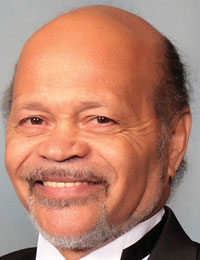
Revolutional slaveholders
By Oscar H. Blayton
Each year, many Americans celebrate the 4th of July. On that day in 1776, it is said that “The Land of the Free” was born.
But the true historical significance of Independence Day has been smothered in hot dogs, barbecue ribs and potato salad. And fireworks distract us from contemplating the economic forces that served as midwife to the birth of this nation.
Four hundred years ago, Europeans invaded the Atlantic coast of North America and fought each other and the indigenous peoples for control of the land. By 1763, the British had made deals or driven everyone else out so that they controlled the entire coast. This included Canada and Florida, which the British obtained by treaty from France and Spain, respectively, at the end of the Seven Years’ War – a global conflict waged by the colonial powers of Europe for control of the rest of the world.
Nine years after Britain gained control of the entire Atlantic seaboard, its colonists in North America were rocked by the news of a decision in the British high court that sounded the death knell for chattel slavery in the British Empire. This decision was the result of a case known as Somerset v. Stewart. James Somerset was a West African held in slavery by a Norfolk, Va., merchant and customs officer, Charles Stewart. Stewart had taken Somerset with him when he sailed to England on business in 1769. Somerset escaped in 1771 while in England, but Stewart recaptured him and had him imprisoned on a ship due to sail for Jamaica. Somerset had been baptized while in England and his godparents helped him sue for his release.
The Lord Chief Justice of the high court ruled in 1772 that slavery was contrary to Common Law and therefore illegal in England. Somerset was freed, and the news spread quickly to America. By early 1773, enslaved African Americans began to petition for their release in courts in the colonies, hoping to repeat Somerset’s success.
The slaveholding British colonists were alarmed at these developments and believed correctly that the British Empire was on the path to ending chattel slavery. By taking their “revolutionary” stance, the colonists hoped to free themselves and their slave-based economy from the inevitable arrival of abolition in the Empire.
Every red, white and blue American knows the narrative of how the freedom loving Sons of Liberty threw off Britain’s yoke of oppression. Some narratives even recount faithful slaves cheering them on. PBS and others have reported that 5,000 African Americans served in the Continental Army. But many thousands more ran away to fight for their own freedom with the British.
The Revolutionary War did not end until two years after the Battle of Yorktown in 1781. As British troops were evacuating New York City in 1783, they took with them, from that port alone, 3,000 former slaves who had supported the crown. The names of these African Americans were documented in the “Book of Negroes” as they boarded the ships bound for Nova Scotia and the British West Indies. An accurate record of these former slaves was kept because of a dispute between George Washington and Sir Guy Carleton, the British commander in charge of the evacuation of New York. Southern colonials had insisted that the treaty ending the war include a provision for the return of escaped African Americans to their slaveholders. Carleton refused to comply with that provision and was backed up by Lord Frederick North, the British Secretary of State who wrote to him that transporting the runaways from the land of their oppression was “certainly an act of justice due to them from us…”
On the other hand, Washington and other slaveholders believed they had been robbed of what was rightfully theirs. After his first meeting with Carleton, Washington complained in a letter to the governor of Virginia: “[T]he slaves who have absconded from their masters will never be restored to them.”
So, while you are enjoying your grilled burgers and fireworks on July 4th, take a moment to consider the facts of how and why this nation came to be. Maintaining slavery, as an economic institution, was the major driving force for the desire for Independence from England – at least for the Southern states. And it is fair to say that the Stars and Stripes were stitched together in large part by the sting of the lash upon black backs.
It is important to accurately recall and understand these facts in our history if we hope to make meaningful progress towards a better future.


Be the first to comment